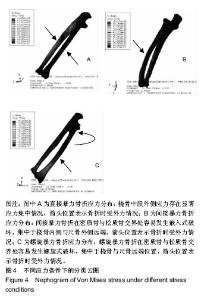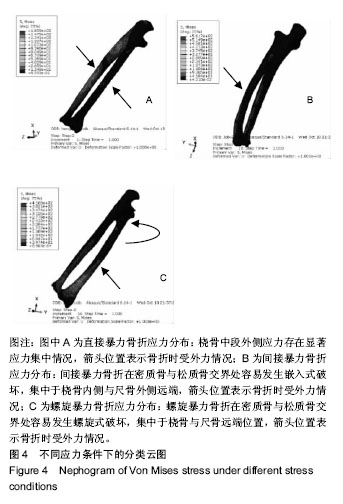| [1] 邸文飞.弹性髓内钉在小儿前臂双骨折中的应用[D].银川:宁夏医科大学, 2017.[2] 韩庆斌,刘国辉,熊家伟,等.尺桡骨骨折治疗分析[J].实用骨科杂志,2011, 17(4):353-355.[3] 刘国庆.弹性髓内钉与钢板内固定修复前臂骨折疗效与安全性的Meta分析[D].兰州:兰州大学,2015.[4] 麦麦提艾力•奥斯曼.维吾尔医治疗儿童前臂双骨折临床疗效观察[D].乌鲁木齐:新疆医科大学,2017.[5] 张晓峰,罗轶,沈国平,等.三种方法治疗尺桡骨中段双骨折的生物力学比较与分析[J].中国矫形外科杂志,2010,18(6):483-485.[6] 刘寒江,郭营,梅伟.基于兔尺桡骨解剖学测量的新型骨缺损模型的建立及评估[J].中国修复重建外科杂志,2016,30(2):173-177.[7] 胡欣.儿童尺桡骨双骨折的外科治疗方案研究[J].实用骨科杂志,2015, 21(9):794-797.[8] 马长生,苏驰.儿童尺桡骨干完全移位骨折的治疗体会[J].中国骨与关节损伤杂志,2015,30(5):538-539.[9] 王志坤,余占洪,谢文伟,等.背侧单切口重建钢板内固定治疗尺桡骨中上段双骨折疗效分析[J].中国骨与关节损伤杂志, 2014,29(9):904-906.[10] 照那木拉,陶乐,王梅.中国蒙医整骨术骨折固定原理探讨[J].中华中医药杂志,2014,29(3):820-822.[11] 王伟,李志军,武永刚,等.腰椎相关骨性结构参数的研究进展[J].内蒙古医科大学学报,2013,35(3):233-237.[12] 郝飞,李志军.有限元方法在儿童颈椎生物力学研究中的应用[J].内蒙古医科大学学报,2014,36(S1):182-186.[13] 徐琴.早期康复训练护理对尺桡骨双骨折患者前臂功能恢复的影响[J].数理医药学杂志,2015,28(3):461-462.[14] 马会旭,刘敏.先天性尺桡骨融合的外科治疗进展[J].华西医学,2012,27(9): 1434-1437.[15] 照那木拉,王梅,达古拉.中国蒙医整骨术的科学渊源及其发展新思考[J].内蒙古民族大学学报,2009,15(2):88-89.[16] 照那木拉,王梅,肖吉日木图.中国蒙医整骨术“四步疗法”的宏观理念[J].中医杂志,2012,53(9):749-750,763.[17] 王梅,宝龙,照那木拉.中国蒙医整骨术骨折分型两种判据及其因果关系[J].内蒙古民族大学学报(自然科学版),2011,26(1):73-75.[18] 朱攀前,廖怀章,李黎.手法复位夹板中立位外固定治疗尺桡骨中段双骨折30例临床观察[J].湖南中医杂志,2017,33(7):76-78.[19] 朱攀前.成人前臂尺桡骨中段双骨折小夹板固定不同位置的力学分析[D].长沙:湖南中医药大学,2017.[20] 王玲,王梦书,周奇.超声诊断尺桡骨远端骨折价值的系统评价[J].中国循证医学杂志,2017,17(2):213-220.[21] Johnson JE, Troy KL. Validation of a new multiscale finite element analysis approach at the distal radius. Med Eng Phys. 2017;44:16-24. [22] Loesaus J, Wobbe I, Stahlberg E, et al. Reliability of the pronator quadratus fat pad sign to predict the severity of distal radius fractures. World J Radiol. 2017;9(9):359-364. [23] Hosseini HS, Dünki A, Fabech J, et al. Fast estimation of Colles' fracture load of the distal section of the radius by homogenized finite element analysis based on HR-pQCT. Bone. 2017;97:65-75. [24] Gibbs JC, Giangregorio LM, Wong AKO, et al. Appendicular and whole body lean mass outcomes are associated with finite element analysis-derived bone strength at the distal radius and tibia in adults aged 40years and older. Bone. 2017;103:47-54. [25] 刘波.提按法应用于Colles骨折复位中的数字虚拟研究[D].广州:广州中医药大学,2012.[26] 殷学民,张君伟,李燕,等.下颌骨骨折伴颞下颌关节脱位术后对颞下颌关节的应力分析[C].//中华口腔医学会颞下颌关节病学及(牙合)学专业委员会.中华口腔医学会颞下颌关节病学及(牙合)学专业委员会.第八届全国颞下颌关节病学及(牙合)学大会论文汇编.2011:1.[27] 杨明辉.1.髋臼后壁骨折手术治疗的疗效分析 2.计算机辅助CT测算髋关节接触面积在髋臼骨折术后的初步应用[D].北京:北京大学,2007.[28] 刘献祥.骨伤科生物力学[M].北京:科学技术出版社,2010.[29] 陈玉凤.护理干预对手术治疗尺桡骨骨干骨折的影响分析[J].中国当代医药,2017,24(34):195-197.[30] 姜自伟,黄枫,庞智晖,等.辨稳论治——从有限元分析角度探讨微观辨证在中医骨伤领域的发展[J].中医正骨,2012,24(12):77-78.[31] 牛晓东,卢莉蓉.医学有限元仿真实验的研究[J].中国现代教育装备,2013 (19):84-86.[32] 陈灼彬,万磊.医学有限元的建模方法[J].中国组织工程研究与临床康复, 2007,11(31):6265-6267.[33] 杜汇良,黄世霖,张金换.医学图像三维有限元重建中的数据管理及T10~T12胸椎模型建立[J].生物医学工程学杂志, 2004,21(5):840-843.[34] 热合木提拉•斯马依.先天性尺桡骨融合的手术方法研究[D].乌鲁木齐:新疆医科大学,2016.[35] 里提甫江•买买提艾力.应用尺桡骨截骨旋转术治疗小儿先天性尺桡骨融合的疗效[D].乌鲁木齐:新疆医科大学,2014.[36] 孙静.肱骨合并同侧尺桡骨骨折的临床研究[D].南京:南京中医药大学, 2010.[37] 廖怀章.经Lister结节穿针多针阶梯形排列髓内弹性固定治疗尺桡骨双骨折的研究[D].长沙:湖南中医药大学,2008.[38] 袁荣霞,董霞,赵纯,等.改良折顶手法复位小夹板固定治疗儿童尺桡骨远端双骨折[J].中医正骨,2015,27(08):18-19,22.[39] 马一平,胡成挺,陈林,等.克氏针辅助复位弹性钉治疗儿童严重移位尺桡骨骨折[J].中国矫形外科杂志,2015,23(10):956-958.[40] 路博,孔繁林,丁亮华,等.数字化钢板在尺桡骨骨干骨折中的临床应用[J].中国骨与关节损伤杂志,2014,29(5):457-459.[41] 邢海清,苏寅,李荣,等.小夹板合U型石膏外固定治疗尺桡骨干双骨折的临床观察[J].实用中西医结合临床,2014,14(2):40-42. |

